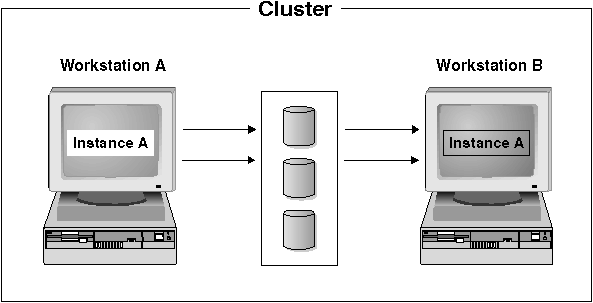

Two types of configuration are available:
Currently, MSCS supports clusters of two machines.
In a partitioned database environment, the clusters do not all have to have the same type of configuration. You can have some clusters that are set up to use hot standby, and others that are set up for mutual takeover. For example, if your DB2 instance consists of five workstations, you can have two machines set up to use mutual takeover configuration, two to use hot standby configuration, with the last machine not configured for failover support.
In a hot standby configuration, one machine in the MSCS cluster provides dedicated failover support, and the other machine participates in the database system. If the machine participating in the database system fails, the database server on it will be started on the failover machine. If, in a partitioned database system, you are running multiple logical nodes on a machine and it fails, the logical nodes will be started on the failover machine. Figure 80 shows an example of a hot standby configuration.
Figure 80. Hot Standby Configuration
 |
In a mutual takeover configuration, both workstations participate in the database system (that is, each machine has at least one database server running on it). If one of the workstations in the MSCS cluster fails, the database server on the failing machine will be started to run on the other machine. In a mutual takeover configuration, a database server on one machine can fail independently of the database server on another machine. Any database server can be active on any machine at any given point in time. Figure 81 shows an example of a mutual takeover configuration.
Figure 81. Mutual Takeover Configuration
 |